Beating China could mean bringing the C-130 back to aircraft carriers
- By Alex Hollings
Share This Article
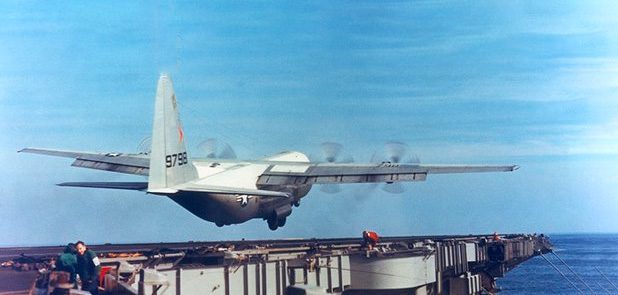
As a variety of new systems and platforms work their way toward service aimed specifically at deterring conflict with China, the United States needs a near-term deterrent with similar capability and capacity to maintain a strategic edge in the interim. One little-known C-130 program out of the 1960s, combined with a more modern effort out of the Air Force Research Lab, could provide exactly that.
This concept would require launching dozens of low-observable cruise missiles from palletized launchers deployed from the back of C-130 cargo planes that operate off of American aircraft carriers… and it’s not quite as crazy as it sounds.
This month, Air Force Secretary Frank Kendall will roll out a sweeping overhaul of the United States Air Force and Space Force aimed at undoing decades worth of technological – and even operational – atrophy caused by America’s transition away from Great Power Competition and toward asymmetrical conflicts in the Middle East. Kendall and the senior leaders from both branches will be reorganizing unit structures, deployment rotations, weapon and platform acquisitions, and even the training requirements for mission-capable Airmen with the singular purpose of repositioning the United States as a deterrent force so potent and ominous to its enemies that American airpower shouldn’t have to win a war at all: instead, its imposing presence alone will deter would-be adversaries.
But getting there will be a massive undertaking – and explaining why is sure to anger at least two different groups of frequent commenters.
Related: China presents an ‘urgent challenge’ Pentagon’s new weapons of mass destruction strategy says
Addressing challenges means acknowledging them
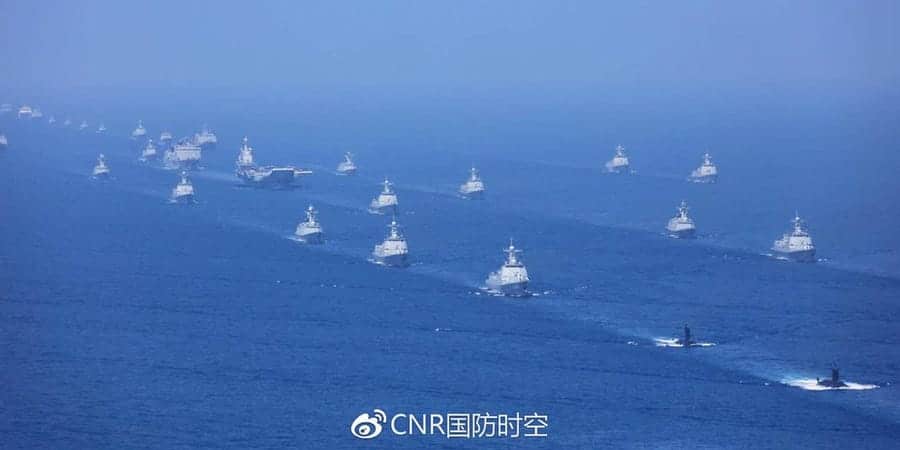
Those who see America’s defense expenditures as bloated and wasteful will surely cringe if I explain that, despite the dollar figure of the U.S. defense budget continuing to rise (thanks in large part to inflation), America spends less on defense today – as a percent of its Gross Domestic Product – than it did throughout much of the Cold War. In fact, if U.S. defense spending matched the percentage of America’s buying power today that it did at its height in the 1960s, the 2023 defense budget would have been over $2.5 trillion, rather than the comparably paltry $816 billion Uncle Sam’s gun clubs were allocated.
Deterrence in a geopolitical environment similar to what existed during the Cold War is expensive. So, if we want the outcome of the 21st-century arms race against China to mirror the peaceful conclusion of the one against the Soviet Union, we – as a people – will need to get over our collective sticker shock when programs are unveiled or, even worse, suffer setbacks or delays.
Those same commenters will argue that America’s defense budget is already bigger than the next 10 or even 20 countries combined… because they saw that fact in a meme somewhere. The truth is that the figures reflected in those memes are self-reported, and it shouldn’t surprise you to learn that countries with a systemic lack of transparency or oversight tend not to tell the truth about their military spending. Recent expert assessments place China’s actual military spending at north of $700 billion per year.
Further, those who exercise the brand of American exceptionalism that causes them to take deep, personal offense to the very idea that the United States may not be able to steamroll over any potential opponent will also be mad when I explain that this influx of spending will be required because today’s military is currently designed to win the last wars it fought, not the next the ones. Today, the United States military simply cannot match China fighter-for-fighter, missile-for-missile, or ship-for-ship in the Pacific theater. America’s sprawling military apparatus is vast, but in many ways, cannot be allocated in its entirety to any single conflict without leaving serious defense obligations unmet. And as we’ve seen in recent months in Ukraine, the Red Sea, and Gaza conflicts don’t wait until your resources are no longer spread thin to kick off.
This means the combat calculus in the Pacific is not the entirety of the U.S. military versus the entirety of China’s… but rather, the assets and forces America can send to that theater versus the entirety of the Chinese military.
Related: Offsetting China’s stealth fighter advantage: An in-depth analysis
China does not need to match American military might
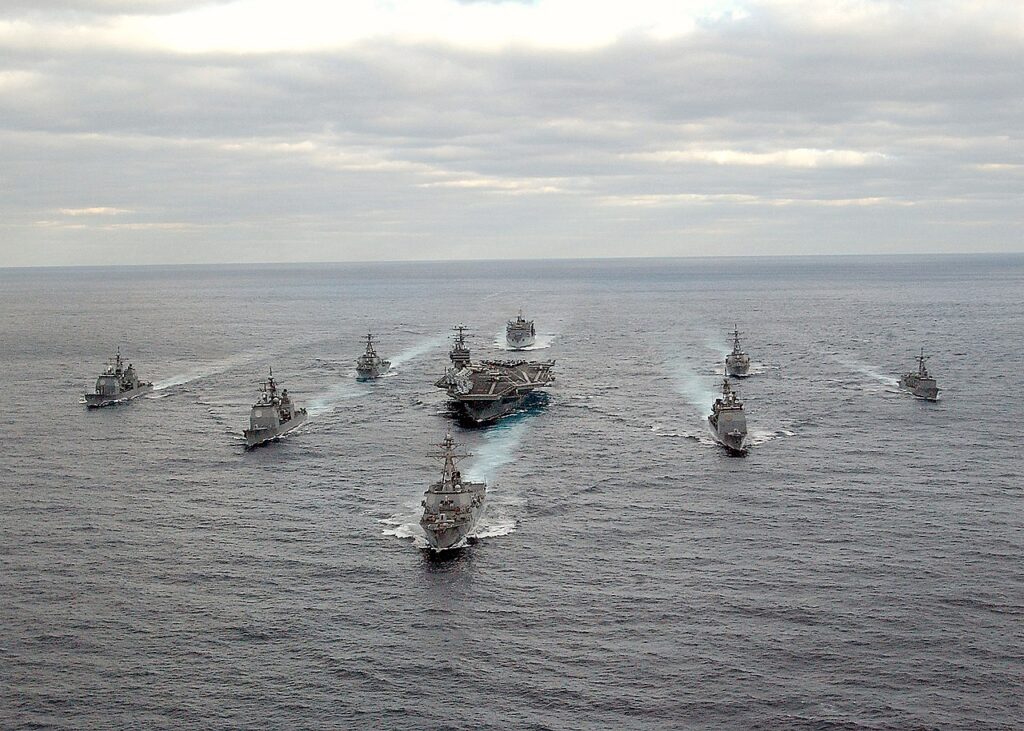
These challenges are only worsened by China’s decade-spanning practice of closely observing American combat tactics in conflicts all around the world, and then developing weapon systems not aimed at matching the observed American capabilities, but rather at taking advantage of identified weaknesses. One of the fundamental truths of warfare is that it’s much cheaper to damage, destroy, or degrade military capabilities than it is to design, develop, and build them, and China has spent years looking over America’s suit of armor for weak points, and then devising strategies and weapon systems aimed directly at those gaps.
This is not only my assessment: There’s a growing chorus of Defense officials echoing this very sentiment within the Pentagon today. This is precisely why the Air Force is now looking down the barrel of its biggest overhaul in decades.
“Xi Jinping has told his military to be ready to invade Taiwan by 2027,” Frank Kendall said in a January interview. “China is a thinking, well-resourced adversary. They’re now thinking about the things we’ve said we’re going to do and how they’re going to defeat them. That’s why we have to re-optimize. We’re in a race. And we can’t just hope we win. We have to actually do things to make sure we stay ahead.”
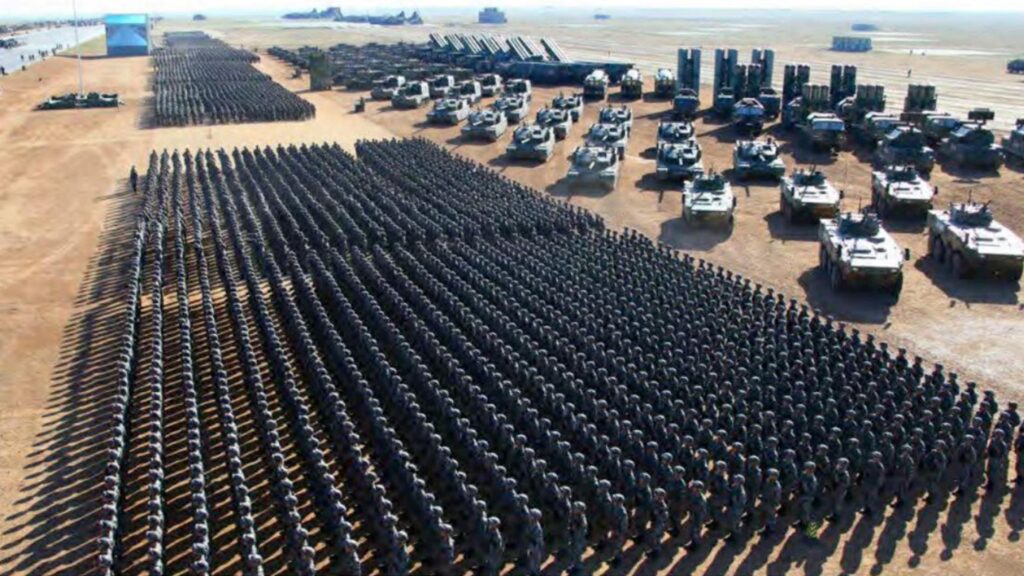
There are dozens of efforts underway aiming to modernize America’s airpower apparatus after decades of technological stagnation and combat operations in permissive environments. A new stealth air superiority fighter, a new stealth bomber, and a variety of AI-enabled drones known as “collaborative combat aircraft” are all in active development and are projected to enter service in the 2030s. Yet, even the most optimistic timelines (and budget projections) don’t envision viable fleets of these platforms in service until perhaps midway through the coming decade. That leaves the United States with an unnerving 10-plus years between where the Air Force is and where its planners believe it needs to be.
Again, it’s important to understand the difference between identifying shortcomings that need to be addressed and dismissing the combat capacity or prowess of America’s warfighters. If a war were to break out today, American servicemembers would do what they always have: fight, adapt, and find a way to win. But winning such a bloody conflict would not feel much like a victory at all. War games conducted by the Center for Strategic and International Studies, for instance, show American victory is all but assured following a Chinese invasion of Taiwan… but even the best outcomes still came at the expense of at least one but sometimes two multi-billion dollar aircraft carriers, thousands of servicemembers’ lives, and countless aircraft lost on the runway to long-range missiles.
Even an easily won war is a blood-soaked travesty we should tolerate only out of necessity. The best outcome then is to deter such a war from breaking out at all. In a perfect world, we could do that with diplomacy alone… but diplomacy is often only effective when casting a broad, looming military shadow.
Related: How The F-16 Changed Air Warfare Forever
The US needs airpower en mass
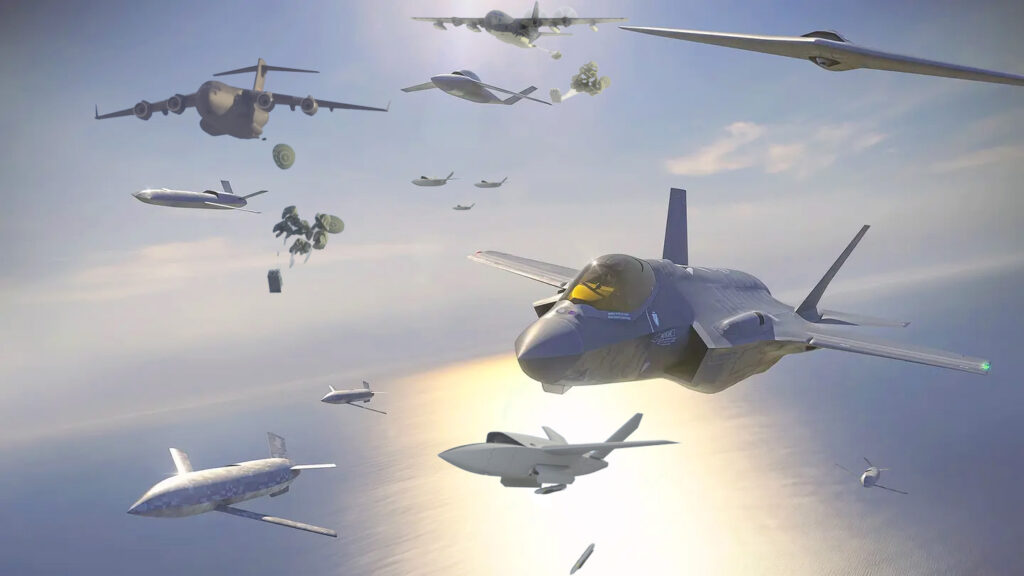
In a recent series of war games conducted by the Mitchell Institute to assess the potential strategic and tactical uses of collaborative combat aircraft, also called CCA or AI-enabled drones, all three “Blue Force” (or American-aligned) teams aimed to use a mass of low-to-medium cost CCA drones to blunt the sharpest edges of China’s anti-access/area denial strategy – which some senior Defense officials are characterizing as the most advanced and integrated air defense apparatus on the planet.
The concepts and methodologies these teams employed all called for using these drones in a variety of functions and to launch them in a variety of ways, including runway-less rocket-propelled launches and deployments from heavy payload bombers. This concept is meant to offset China’s strategy which is to use long-range cruise and ballistic missiles to wipe out local airstrips and keep American aircraft carriers at bay, forcing American aircraft to operate from further removed bases, increasing the distances they have to cover and reducing sortie rates sufficiently to make air defense a simpler exercise.
This airpower en mass strategy seems entirely sound, but it’s predicated on the idea of a conflict in 2030 and on defense budgets between now and then that will allow for the rapid acquisition of fleets of advanced AI-enabled drones and 6th generation fighters required to relay commands in the fight (along with some other newly-fielded autonomous systems to boot).
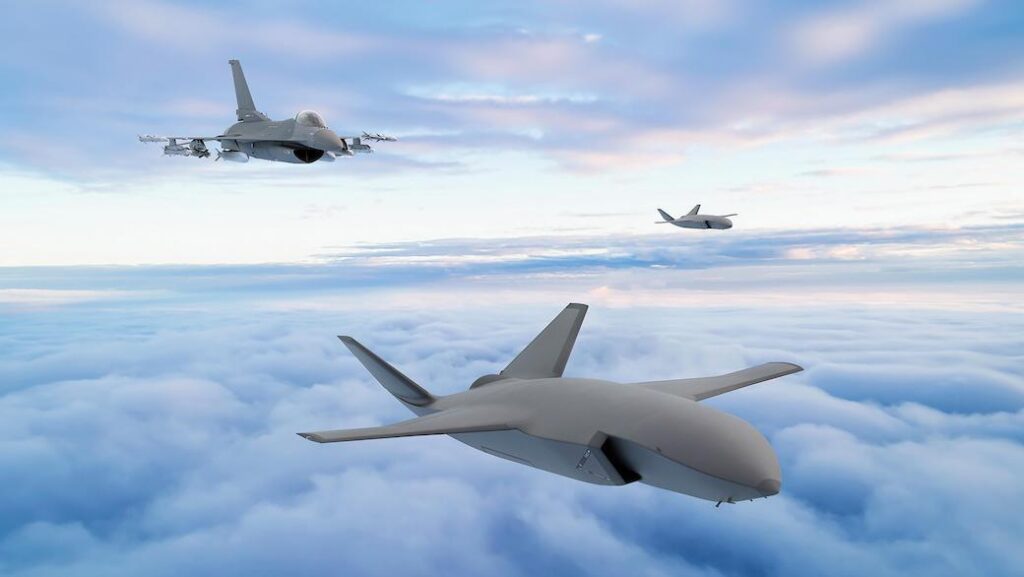
So, what does this mean for such a conflict if the United States doesn’t manage to field all that by 2030?
If China has carefully watched the way the American military conducts combat operations and has developed weapons, systems, and tactics aimed precisely at mitigating those standard practices, deterring conflict with China will have to mean demonstrating the American military’s ability to rapidly adapt today, using the weapons and platforms already available and relying on already proven technology, but in surprising and effective new ways.
One such possibility that we’ve discussed before is to blur the lines between what constitutes a modern fighter and bomber by arming America’s forthcoming heavy payload stealth bomber, the B-21 Raider, with long-range, radar-guided air-to-air missiles. The B-21 would play a vital role in any conflict with China, flying close enough to Chinese shores to leverage its advanced Intelligence, Surveillance, and Reconnaissance (ISR) suite to locate and identify long-range anti-ship missile launchers to be taken out by subsequent waves of B-21s, paving the way for carrier strike groups to close with Chinese shores. Adding some degree of air-to-air capability to the Raider could make it an even more potent threat, capable of not only self-defense but of serving as a stealthy networked missile truck for other advanced fighters like the F-35.
But even the B-21’s broad capability set is arguably too far away for us to rely on it for deterrence today and in the near future. To successfully deter China, we need to get creative with what’s already on the shelf…
And that’s why it may finally be time to see the legendary C-130 Hercules return to the decks of America’s flattops.
When the Hercules took to the sea
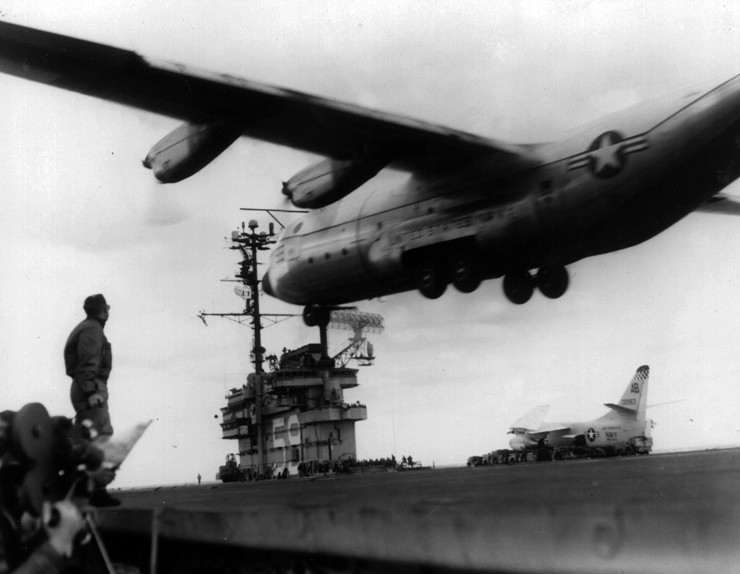
Back in 1963, the US Navy wanted to explore the possibility of resupplying aircraft carriers with larger cargo planes than the “carrier onboard delivery” (COD) aircraft like the much smaller C-1 Traders used at the time. So, they turned to the broadly capable C-130 and Navy F-4 pilot, then-Lt. James Flatley III.
I had the honor of speaking with now-retired Admiral Flatley about this incredible exercise a few years ago. If this exercise sounds crazy to you, you should know that it sounded crazy to him too: When he first received the assignment to land a modified Marine Corps KC-130F on the deck of the USS Forestall some 500 miles off the Boston coast, he thought the chief of Naval Operations was kidding. Flatley had never flown a quad-prop aircraft in his life: he was a fighter pilot who had honed his carrier landing skills with jets purpose-built for the job.
His KC-130 – the largest and heaviest aircraft ever to attempt a carrier landing – had no tail hook as aircraft designed to land on carriers did. In fact, the ground crew even painted the words, “Look ma, no tail hook” on the side of the plane’s cabin. The only modifications made to the aircraft were removing its underwing refueling pods, installing smaller nose landing gear and an anti-skid braking system. These modifications didn’t make Hatley’s Hercules capable of doing anything other C-130s couldn’t and were more about just improving safety along the way.
On October 3, 1963, Flatley, his co-pilot, flight engineer, and a Lockheed engineering test pilot set off for their first attempted landing, cruising into a 40-knot headwind. According to Lockheed’s chief engineer, who was already on the ship at the time, he watched the bow of the Forestall pitch up and down by at least 30 feet as the vessel steamed forward through the choppy Atlantic waters, making Flatley’s landing attempt all the more nerve-wracking.
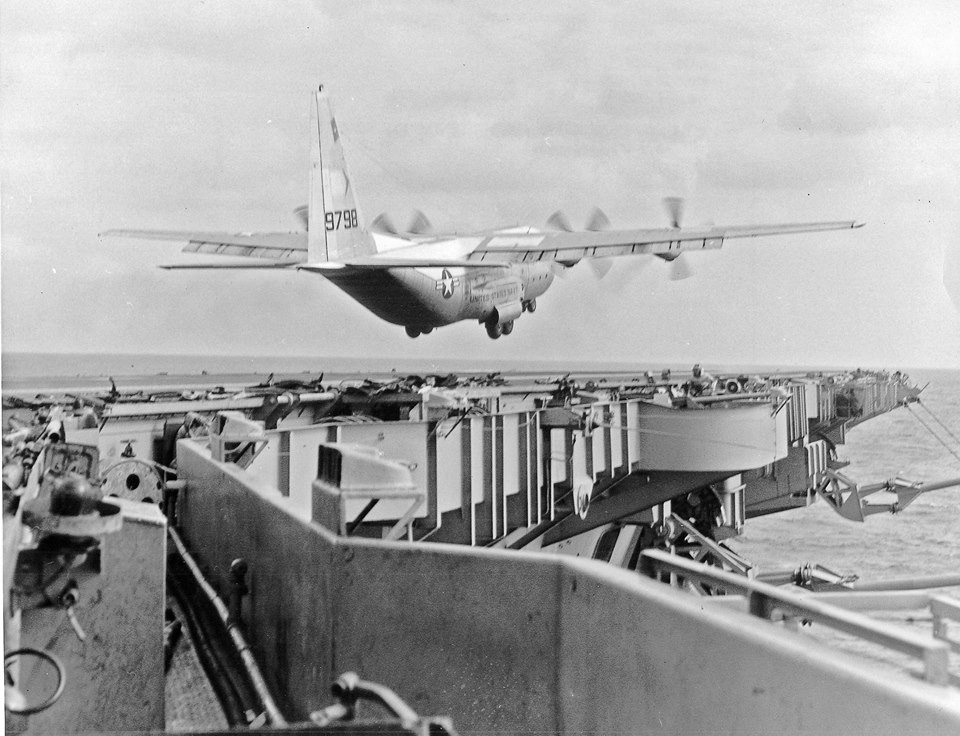
Yet, despite the circumstances, Flatley brought the massive cargo plane down onto the Forestall’s flight deck with expert precision, missing the carrier’s control tower with the tip of his wing by less than 15 feet. From there, Flatley proceeded to conduct no fewer than 21 unarrested full-stop carrier landings and 21 more non-assisted take-offs at gross weights ranging from 85,000 pounds up to 121,000. Once he had the hang of it, Flatley could land a fully loaded C-130 on the 1,000-foot carrier and bring it to a full stop in only 460 feet. He needed only 745 feet to take off at the same weight.
As Lockheed’s Ted Limmer later recalled, in some of these flights, Flatley even managed to land the C-130 in such a short distance that he was able to take off again from right where he’d stopped – and again, we’re talking about an aircraft that was not equipped for catapult launches. This was entirely under the Hercules’ own power.
Ultimately, Flatley’s success confirmed to the Navy that it could feasibly ferry payloads as large as 25,000 pounds to carriers as far out as 2,500 miles, making it an entirely feasibly heavy lift COD aircraft that could deliver aircraft parts, munitions, and anything else a carrier might need to stay in the fight. Nevertheless, the entire operation was still much more dangerous than relying on the smaller, purpose-built aircraft for the job, and at the time, there was no pressing need to deliver larger payloads to carriers underway. So, the Navy took what it’d learned and slipped it into its back pocket without any clear intention of ever putting the concept into practice.
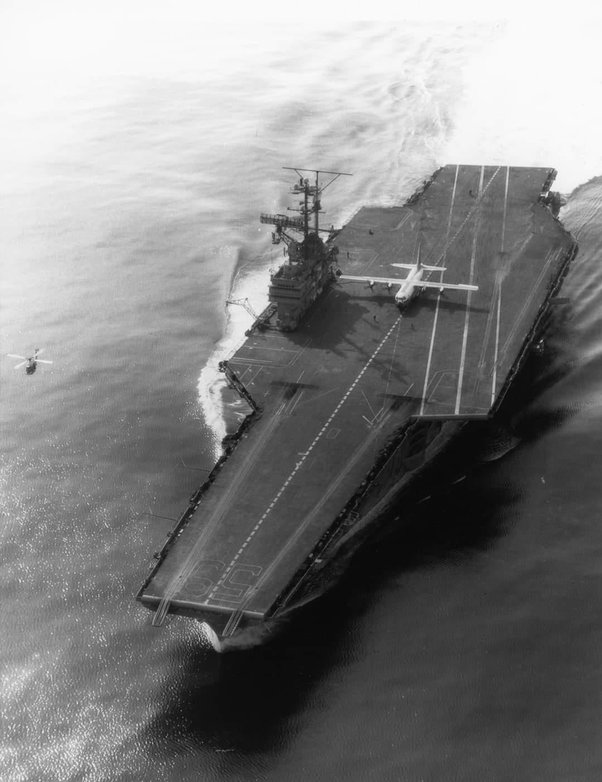
Officially, this is where this story ends. But when I discussed his time landing the Hercules aboard the Forestall with the admiral, he did add one more interesting bit of context that’s stuck with me ever since. In my mind, the C-130 COD exercises were akin to the CIA and Navy’s efforts to fly the U-2 off of aircraft carriers over the years: successful, but maybe a bit too impractical to be put into practice. The admiral, however, seemed fairly adamant that this capability was not simply something the Navy had experimented with and then left on a shelf to collect dust.
Instead, he said it was a capability the Navy continued to keep handy, as there could yet be good reason to see the Hercules return to shipboard duties… especially if war were ever to break out in the Pacific.
He even highlighted how more modern supercarriers like the Nimitz and especially the Ford class would be even easier to operate C-130s from. In fact, he said these carriers could likely support multiple C-130s at once if they needed to.
Related: From cargo plane to gunship: The evolution of the C-130
Sending Rapid Dragon out to sea with the C-130
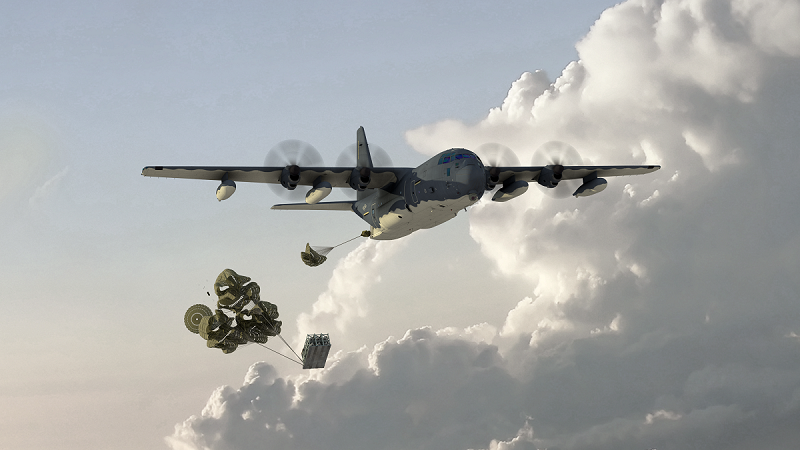
Waging war against China in its backyard would require the U.S. to mass the massive amount of airpower required to diminish the anti-air and anti-ship capabilities that collectively provide the framework for China’s A2/AD strategy. In recent war games, low to medium-cost CCA aircraft were used for these purposes, based on the assumption that they would exist in sufficient numbers by the time conflict breaks out. But if conflict were to break out before these new platforms emerge, there’s already a system in testing that could deliver similar capabilities using weapons that are already in production.
That program is called Rapid Dragon.
The Air Force Research Lab’s Rapid Dragon program is, to put it simply, a palletized missile launch system that can enable C-130s or C-17s to launch a large volume of low-observable cruise missiles from stand-off ranges. It includes a modular palletized munition system that allows for stacks of six missiles per pallet in the C-130 and as many as nine per pallet in the larger C-17. These pallets were designed to accommodate the AGM-158 Joint Air to Surface Stand-off Missile (JASSM), but it stands to reason that they can deploy the longer-ranged JASMM-ER as well as the AGM-158C Long Range Anti-Ship Missile as well, as the three weapons share the same exterior dimensions.
The pallets are rolled out the back of the aircraft like any other airdrop. Once deployed, a parachute opens to stabilize the pallet as the onboard control system fires the missiles to begin their trek of more than 500 miles (and potentially greater than 600) to their targets where they will deliver 1,100-pound explosive warheads to land or sea targets.
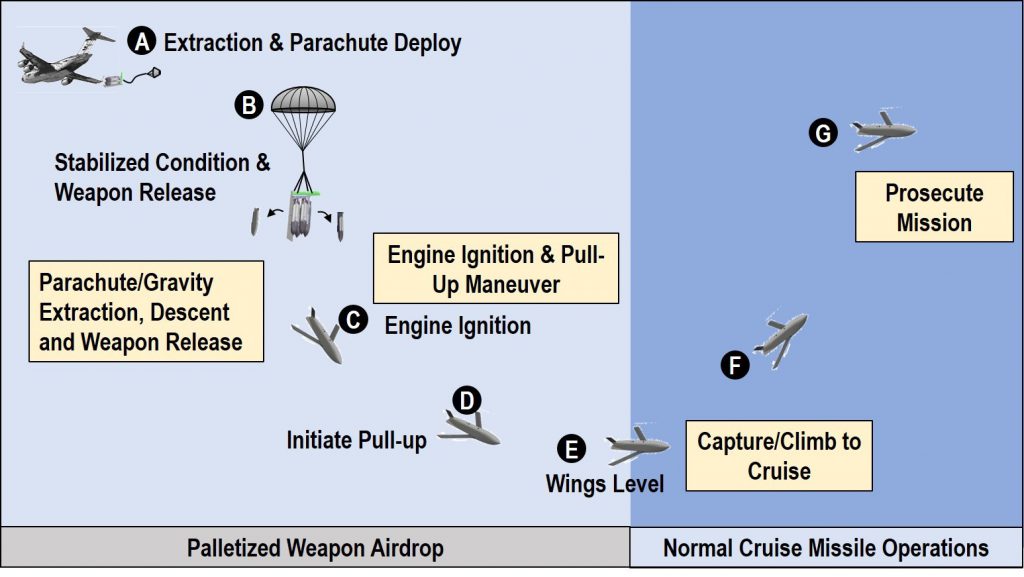
The Air Force’s more modern C-130Js leveraged in Rapid Dragon testing can accommodate up to six pallets, but because of the weight of these missiles – over 2,250 pounds a piece – the C-130J would likely be limited to carrying two pallets, each equipped with six missiles for 12 in total (with the larger C-130J-30 likely capable of carrying as many as three pallets for 18 total missiles per sortie).
With an estimated range of some 2,071 miles while carrying a similar payload, that gives the C-130J a combat radius of around 1,000 miles. Add the maximum range of the JASSM-ER, reported to be between 500 and 650 miles, and this gives today’s C-130s the capacity to strike targets more than 1,500 miles away without even needing mid-flight refueling.
With China’s goal to engage U.S. airstrips throughout what’s known as the “first island chain,” which includes Taiwan and parts of the Philippines, even these extended ranges may not be sufficient to hold Chinese shoreline defenses at risk with Rapid Dragon munitions. (Though, when armed with LRASMs, they could still prove to be valuable ship hunters). Nevertheless, if these C-130s were to land on aircraft carriers operating just outside the 1,000-mile reach of China’s DF-ZF hypersonic anti-ship missile, they could quickly refuel and continue onward to deploy their munitions and then turn tail and run. Importantly, this would still be in range of some of China’s longer-ranged anti-ship ballistic missiles, but at these distances, the kill chain required to score a hit would need to be extremely robust, and carrier strike groups are more than capable of intercepting inbound ballistic missiles.
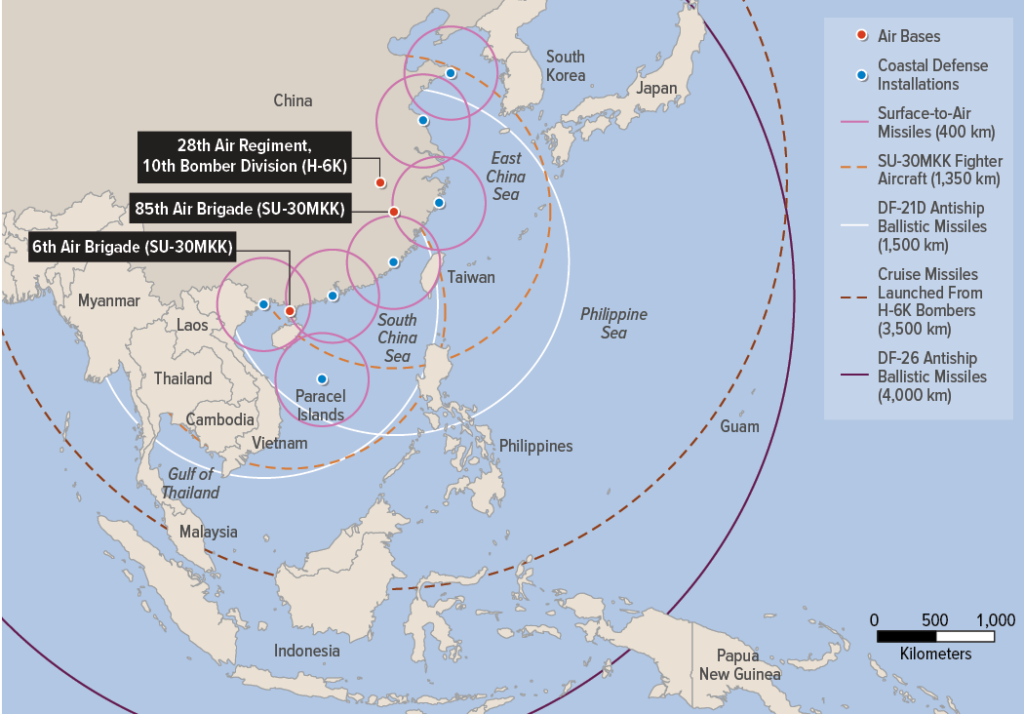
By coordinating these strikes with ISR and bombing operations conducted by B-21 Raiders, as well as volleys of ADM-160 Miniature Air Launched Decoys deployed by B-52 bombers also operating outside engagement ranges, the C-130 and its Rapid Dragon pallets could provide a low-cost, high effect means of overwhelming Chinese defenses.
Yet, it is important to understand that these modern C-130Js are heavier and more powerful than previous iterations of the aircraft, making it less of a certainty that they could operate from the decks of these carriers – though Admiral Flatley seemed confident they could.
This method is not a magic bullet, and such a conflict would still be bloody and brutal. The real value in demonstrating this capability wouldn’t necessarily be to leverage it against China in a war, but rather to use it as a stand-in deterrent against Chinese aggression until more robust and technologically advanced means emerge.
Put simply, operating C-130s off of American aircraft carriers in the Pacific could provide a sufficient threat to throw China’s existing combat calculus off balance. That alone could be enough to push any timeline for the invasion of Taiwan back – potentially far enough for new American capabilities to be brought to bear.
Read more from Sandboxx News
Related Posts
Sandboxx News Merch
-

‘AirPower’ Classic Hoodie
$46.00 – $48.00 Select options This product has multiple variants. The options may be chosen on the product page -

‘Kinetic Diplomacy’ Bumper Sticker (Black)
$8.00 Add to cart -

‘Sandboxx News’ Trucker Cap
$27.00 Select options This product has multiple variants. The options may be chosen on the product page

Alex Hollings
Alex Hollings is a writer, dad, and Marine veteran.
Related to: Military Affairs
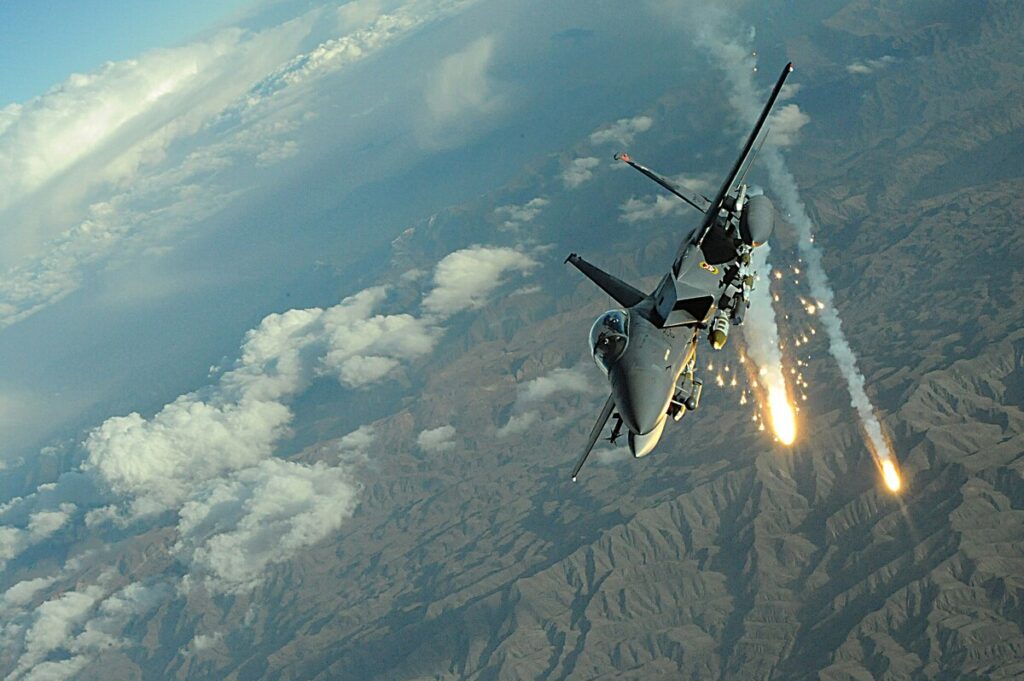
How an F-15E scored its only air-to-air kill… with a bomb
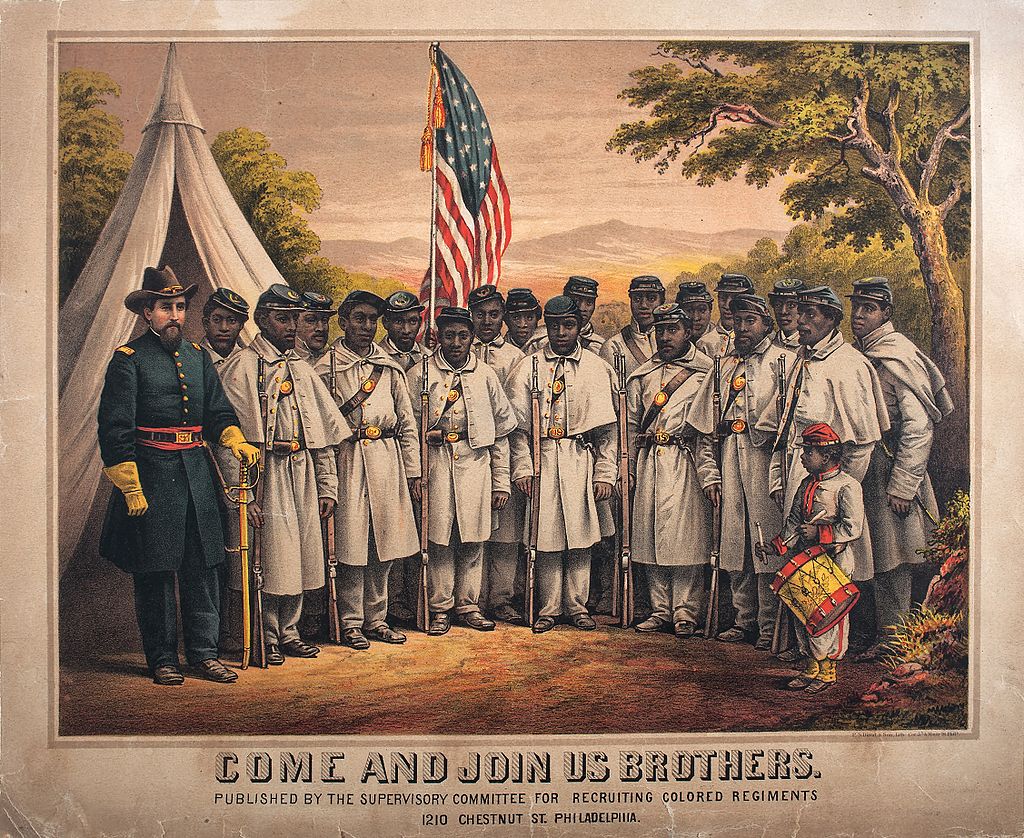
The military roots of Juneteenth and why we celebrate it
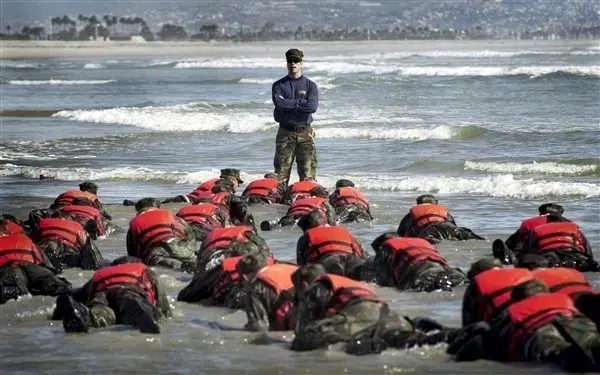
BUD/S instructors have their favorite games to make SEAL candidates suffer
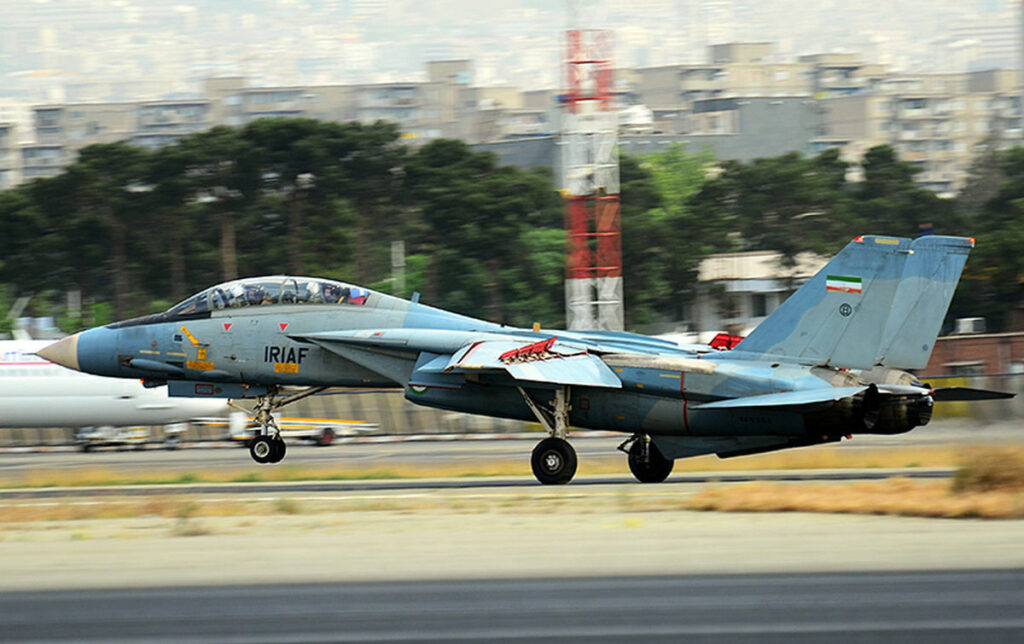
Israel wipes out Iranian F-14 Tomcats on the airstrip
Sandboxx News
-

‘Sandboxx News’ Trucker Cap
$27.00 Select options This product has multiple variants. The options may be chosen on the product page -

‘AirPower’ Classic Hoodie
$46.00 – $48.00 Select options This product has multiple variants. The options may be chosen on the product page -

‘AirPower’ Golf Rope Hat
$31.00 Select options This product has multiple variants. The options may be chosen on the product page -

‘Sandboxx News’ Dad Hat
$27.00 Select options This product has multiple variants. The options may be chosen on the product page
